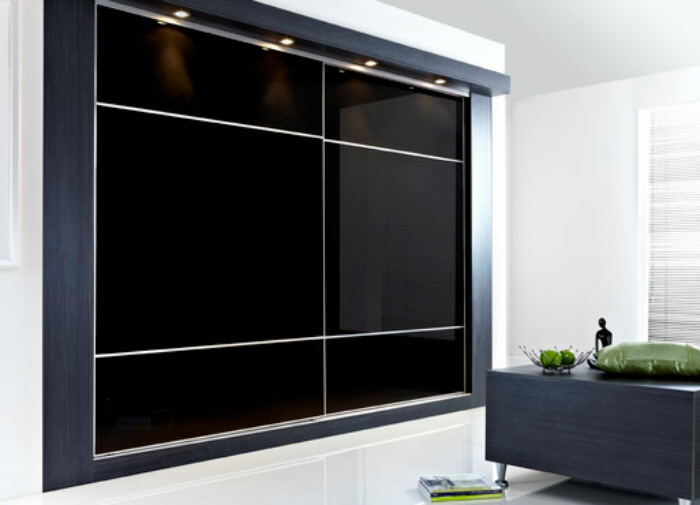Measuring Guide
Don’t buy your wardrobes without consulting our Measuring Guide
SLIDING WARDROBE DOORS
It is very important that you take accurate measurements before ordering your sliding wardrobe doors. Use a spirit level to check the ceiling and floor levels. If the floor is uneven, the doors may slide unintentionally! If either ceiling or floor are not level it is important to level these up before taking the measurements. Our optional bottom and top liners will allow you to level up to 15mm using packers (not supplied). If carpet is fitted compress it down as much as possible; you can lay the bottom track and liner onto carpet.
Unlike other systems our sliding wardrobes are not limited to maximum height meaning that you can have full floor to ceiling wardrobes on any height opening. Alternatively, you can build a bulkhead to drop the height of the wardrobe down. Our sliding wardrobe systems are bottom rolling, using ball bearing bottom rollers with twin wheel top guides. There is no load bearing on the ceiling.

MEASURING HEIGHT
The top track system will accommodate up to 15mm in height difference. Measure in at least three places – the centre and both ends eg. at A, B and C.
IMPORTANT – Use the smallest measurement when supplying us with height measurements for your sliding wardrobe doors.


MEASURING WIDTH
Check the walls with a spirit level to see if they bow or curve. Our optional strike plate will allow you to level up to 15mm using packers (not supplied). If you have coving and skirting you will need to remove a section of them to slide the strike plate in before installing. Measure in two places top and bottom. Please ensure you measure (A) above any skirting board and (B) below any coving that may hinder wardrobe installation.
IMPORTANT – Use the narrowest measurement when supplying us with width measurements.
NOTE – both top and bottom tracks are supplied over length to allow you to trim them to exact requirements.
WALL TO END PANELS
If your opening can’t go from wall to wall because of obstructions such as a door, use an end panel. This can be cut to size and very simply attached to the wall using fixing blocks or timber battening (not supplied).
IMPORTANT – In the case of wall to end panel measure the dimension from the inner wall to the outside position for the proposed end panel.
NOTE – The end panels are 640mm deep. If an end panel is used there is no need for a strike plate.


END TO END PANELS
If your opening can’t go from wall to wall because of obstructions such as a door, use an end panel. This can be cut to size and very simply attached to the wall using fixing blocks or timber battening (not supplied).
IMPORTANT – In the case of wall to end panel measure the dimension from the inner wall to the outside position for the proposed end panel.
NOTE – The end panels are 640mm deep. If an end panel is used there is no need for a strike plate.
